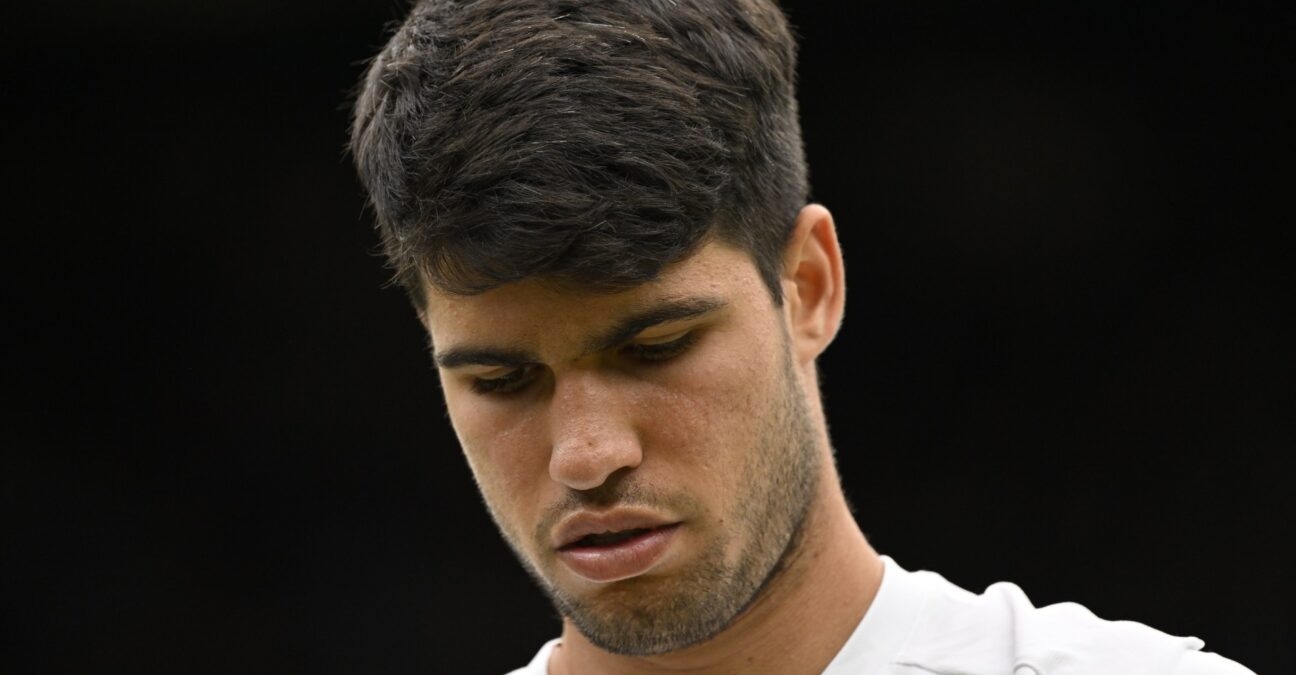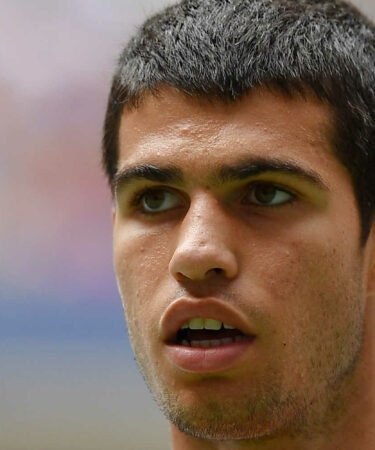Carlos Alcaraz has solved tennis’ five-set riddle, but how?
Carlos Alcaraz is a ringer when it comes to playing fifth sets at the Slams. So what is his secret to success?
 Carlos Alcaraz at Wimbledon in 2024 (Chryslene Caillaud/Panoramic)
Carlos Alcaraz at Wimbledon in 2024 (Chryslene Caillaud/Panoramic)
After his latest cliff-hanging victory at Wimbledon, where he is now 4-0 in deciding sets, much is being made of Carlos Alcaraz’s ability to deliver victories in the clutch, playing breathtaking tennis in the biggest moments, and forcing doubt into his opponent’s head.
He’s now 12-1 in five-setters at the Grand Slams (including 2-0 in Grand Slam finals), which means that Alcaraz, who faces 16th seed Ugo Humbert or Brandon Nakashima next, has the highest winning percentage of all players in history that have played a minimum of ten five-setters at the majors.
Best five-set winning percentage at Grand Slams (minimum 10 matches played, Open Era):
- Alcaraz: 12-1, 92.3 percent
- Bjorn Borg, 20-3, 87.0 percent
- Johan Kriek: 12-2, 86.7 percent
- Harold Solomon: 11-2 84.6 percent
Alcaraz says that he is aware of the statistic, and adds that he started to believe more in himself in five-setters when he realised he was winning nearl all of them.
“When I had 5-1, 6-1, I started to think, ‘Okay, in the fifth sets I’m going to be better than the other guy,’” he said on Friday.
Physicality is key
So what is it that makes Alcaraz so effective under pressure? After all, this is a player that stared down the barrel of a two sets to one deficit against seven-time Wimbledon champion Novak Djokovic in last year’s Wimbledon final and emerged with the victory. Is he simply the epitome of grace under pressure? Does he never get nervous?
Alcaraz says he takes a lot of confidence from hit fitness.
“Feeling great physically help you a lot,” he says. “To play more calm than the opponent. Feeling much better than the opponent physically, mentally. I know that the other guy has to play at a really high level of tennis intensity in the five set if he wants to beat me. That helps me a lot to deal much better with those difficult situations in the fifth set.”
In theory it sounds great. But it can’t be just fitness. There’s a looseness that Alcaraz plays with in those biggest moments. As his opponents become timid, he becomes bold. He plays free at the moments when most players lose their nerve.
No bad memories
Perhaps we can chalk that up to the absence of any scar tissue. By winning 12 of 13 deciding sets at the majors – seven of them against top-20 players and five of them against top-10 players – Alcaraz has created a feeling of invincibility in his head. His previous success allows him to breathe, to realise that if he just plays free, he’ll be fine.
“In my head I’m thinking that I’m good at it, and [my opponents] have to believe that I am going to win, I am going to play my best tennis. In every match that I’ve played fifth sets, I played really close or my best tennis. I realized that I’m good at it and I believe that I’m going to win. I think that’s the good point for me.”
It may not last forever, but for the moment, it’s hard to argue with Alcaraz’s astounding success in five-setters. At 21 he has seemingly solved tennis’ biggest riddle: how to deliver the best tennis when it matters the most.








